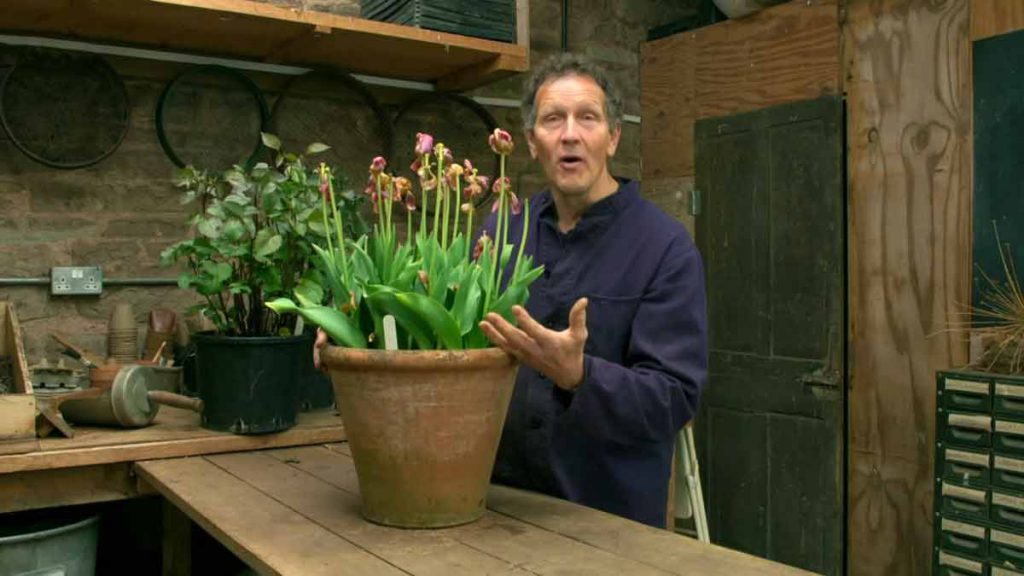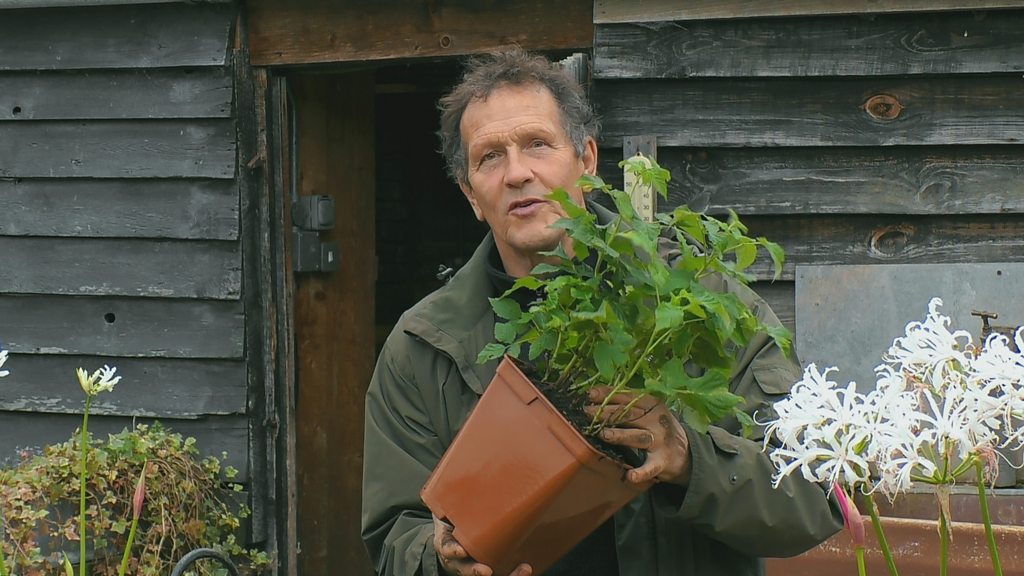Gardeners’ World 2021 episode 15: We join Adam Frost in his garden, where he will be giving tips on laying turf, planting succulents and adding perennial plants to his kitchen garden to grow as cut flowers.
Alternative Stream
Joe Swift travels to Marwood Hill Gardens in Devon to explore plants that thrive in moist conditions, and in Buckinghamshire, we uncover the story of a hidden collection of iris accumulated over a period of 45 years. In Midlothian, we visit a nursery where the Himalayan blue poppy is a speciality, and Frances Tophill meets a florist who has a passion for growing cut flowers on her allotment.
Gardeners’ World 2021 episode 15
Cut flowers – growing and selection
Many garden plants can be enjoyed as cut flowers and foliage in the home, offering cheaper and diverse alternatives to florist flowers. Borders can be adapted to provide cutting material throughout the year. Alternatively, dedicate a part of the garden to growing cut flowers.
If space allows, dedicate a part of the garden to growing just cut flowers. The advantage of a cutting garden over picking from borders is that it avoids depleting beds and borders, as well as providing a more productive planned area for the cut flower gardener.
Plant or sow in rows; this makes weeding, staking and picking so much easier. Take the final spread of plants into account and allow access between the rows. If planted too close together, plants will fall into each other, get tangled and may be damaged, making them less suitable for harvesting. As taller plants are often grown for cut flowers, robust supports are usually needed.
Choosing plants
When selecting plants for cutting, make sure that they are suitable for the chosen situation. Keep records about performance and source of plants or seeds for future reference.
Annuals: the initial outlay of buying seeds is less than when buying perennials e.g. sunflowers, cosmos, cornflower and larkspur. They have to be sown every year, but this can be an opportunity to try new or different plants. Limited flowering seasons can be extended by sowing in autumn or propagating plants in a greenhouse.
Herbaceous perennials: choose perennials that offer a long season of picking. Include foliage plants. If raised from seed many perennials will not flower in the first year. However, if sown early some such as Achillea millefolium ‘Summer Pastels’, agastache, echinacaea and delphinium may flower in the same season.
Bulbs: bulbs are great for the cut flower garden as many start flowering in late winter or early spring. Extend the picking season by planting early-, mid- and late-flowering cultivars. Tulips and hyacinths may not flower well in following years, so consider discarding the bulbs and planting new stock each year. Bulbs can be forced by an initial period rooting in cool and dark conditions before being brought indoors to flower from mid-winter. Bulbs, narcissi for example, lend themselves to naturalising in grass or deciduous shade from where blooms can be taken without reducing flowers in the garden.
Shrubs: evergreens and early-flowering shrubs such as camellia, Japanese quince (Chaenomeles), forsythia and witch hazel (Hamamelis) can provide invaluable cutting material in winter and early spring. However, shrubs can produce abundant ornamental foliage all year round. Allow shrubs to establish and settle into flowering before cutting.
Climbers: a number of climbers are useful as they not only provide flowers but some bear attractive seed heads (clematis) or fruits (roses) as well.
Cut and come again salads
Produce your own mixed salads by growing a range of leafy salads and vegetables that can be cut and will then sprout (come) again. Harvesting the young leaves when you need them prevents plants from maturing and ensures several harvests of small, tender, mild-flavoured leaves over a long period of time.
A range of leafy vegetables can be grown as cut and come again, including:Amaranth, basil, beetroot, chicory, coriander, chard, corn salad, dandelion, endive, komatsuma, land cress, leaf celery, lettuce, mizuna, mustard, pak choi, parsley, purslane, radicchio, red kale, rocket, sorrel and spinach.
Crops usually grown for their roots such as beetroot, radish and turnip also have leaves that are tasty when harvested young. Buy vegetable seeds separately or look out for prepared salad seed mixes as this can be more economical.
Salad can be grown all year round in a heated greenhouse, but this is rarely economical. A sunny windowsill or conservatory can be successful, provided it does not get too hot. In unheated growing conditions, sowing can begin as soon as light levels and temperatures allow, producing crops from late spring to autumn. Oriental leaves such as pak choi, mizuna and komatsuma are best sown from mid-summer onwards as earlier crops tend to produce flowers rather than leaves.
Cut and come again salads can help to avoid glut and dearth problems, which are common when vegetables are grown and mature all at once. To ensure the longest, steadiest supply of young leaves throughout the growing season, try to sow small batches of seed every two weeks until late August.
It is best to harvest leaves in the morning when they are at their freshest. Try to only harvest what you need for each day as baby leaves can wilt quickly. If you need to store them, dampen leaves with tap water and put them in a plastic bag in the salad compartment of the fridge.




